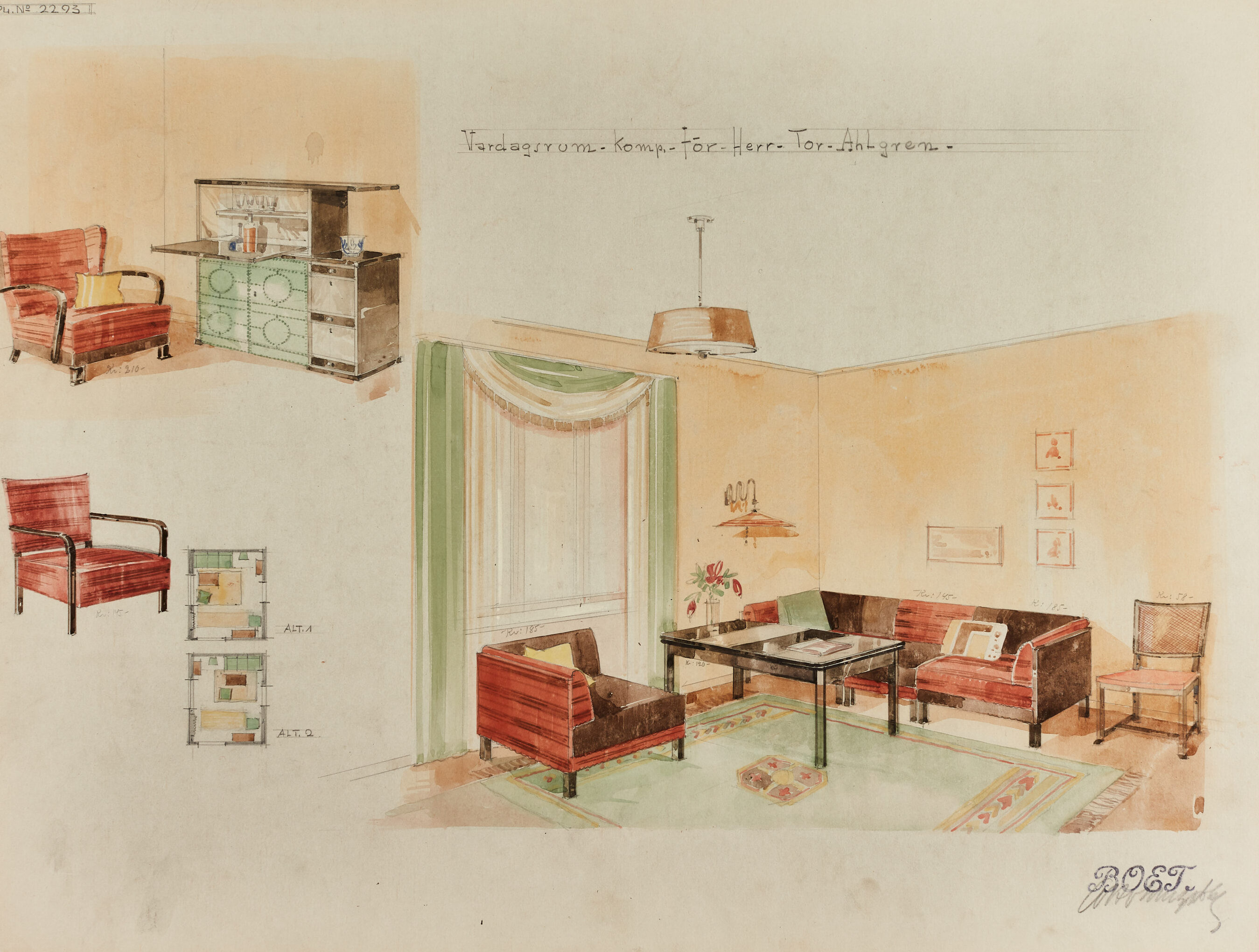
Otto Schulz
Otto Schulz (1882–1970) was a German-born designer who became a leading figure in Swedish interior and furniture design. Trained in Berlin and Charlottenburg, he moved to Sweden in 1907 and brought with him a refined approach to craftsmanship, decorative arts, and spatial design.
In 1920, he co-founded AB Boet in Gothenburg with architect Adolf Nordenberg. The company functioned as a design studio, showroom, and furniture manufacturer, known for creating complete interior environments. Boet became particularly influential in the 1920s and 1930s, presenting fully decorated rooms and apartments to demonstrate their design concepts in context. The studio emphasized harmony between architecture, furniture, lighting, and textiles.
From 1927 to 1938, Schulz also published the magazine Boet, which became one of Sweden’s most important design publications. It showcased new design ideas, covered international trends, and featured the work of contemporary architects, artists, and designers, contributing significantly to the intellectual culture of Swedish design in the early twentieth century.
Schulz’s furniture designs merged Art Deco luxury with Scandinavian clarity. His pieces were often made of high-quality woods such as mahogany, birch, walnut, and elm, and many were richly upholstered in velvet or leather. He developed and patented several unique decorative techniques, including Bopoint (brass-studded upholstery), Bosaik (mosaic-like wood inlays), and Botarsia (inlaid brass in wood), which gave his work a distinct and elegant character.
Among his most iconic creations is the so-called “Schulz lounge chair,” first introduced in 1936. It became especially popular in the 1940s and 1950s when produced by Jio Möbler in Jönköping. The chair is recognized for its deep, curved backrest, soft cushioning, and sculptural form—embodying both comfort and craftsmanship.
Otto Schulz also completed numerous high-profile interior design commissions for cafés, restaurants, private residences, and ship interiors. His design philosophy focused on creating holistic environments rather than standalone pieces of furniture, which was advanced for his time.
Although he did not receive many formal awards, his influence was significant within Sweden, and his work was often featured in exhibitions and journals. He retired from Boet in 1950 and later concentrated on developing mechanical and functional furniture designs, including a patented fold-out bed concept.
Schulz passed away in Gothenburg in 1970. His work has seen renewed attention in recent decades and is now highly valued by collectors and design historians. His furniture is included in museum collections and has fetched high prices at auctions, particularly pieces that feature his unique decorative techniques. Otto Schulz remains a singular voice in Scandinavian design history, bridging classical richness with modern ideals of functionality and total design.
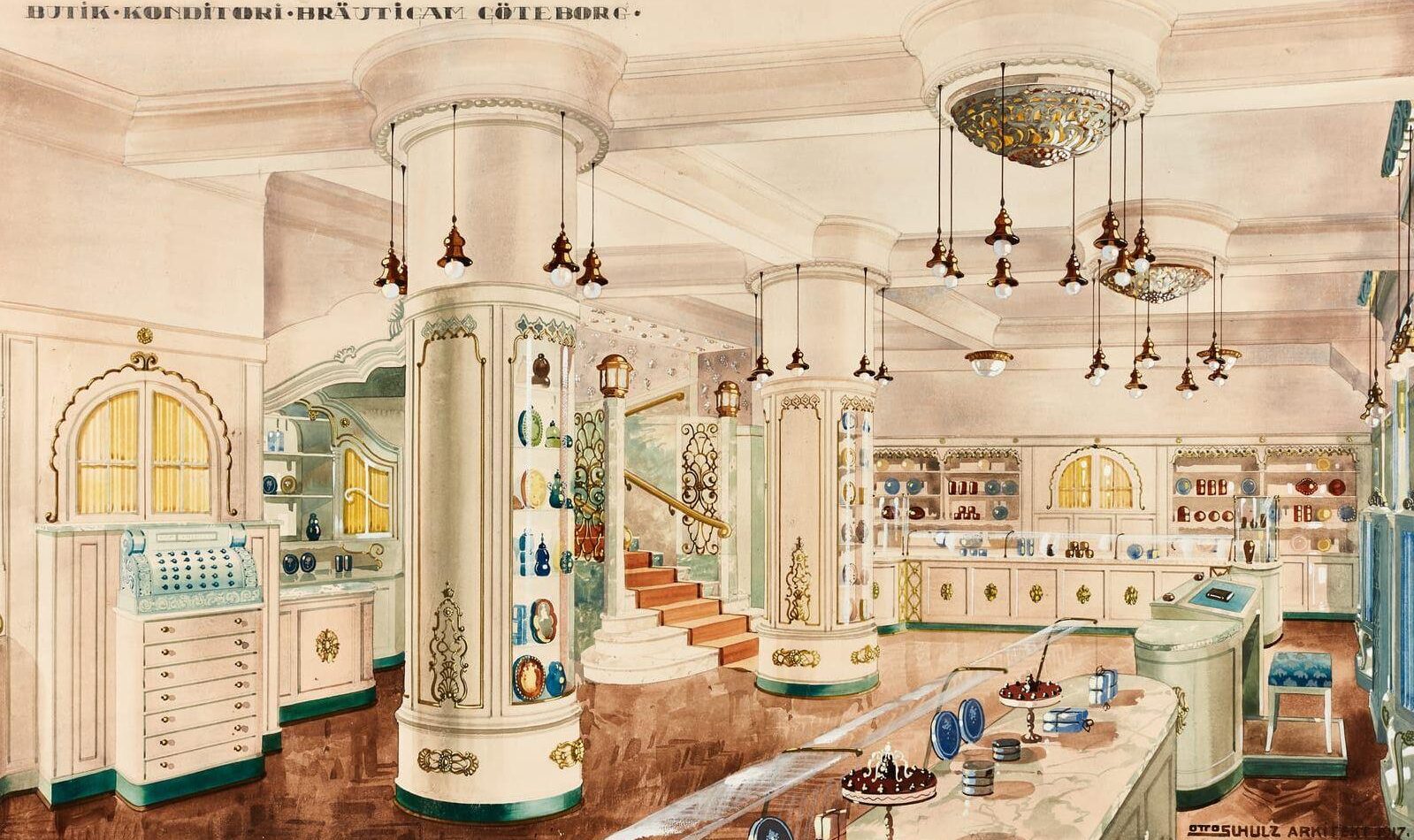
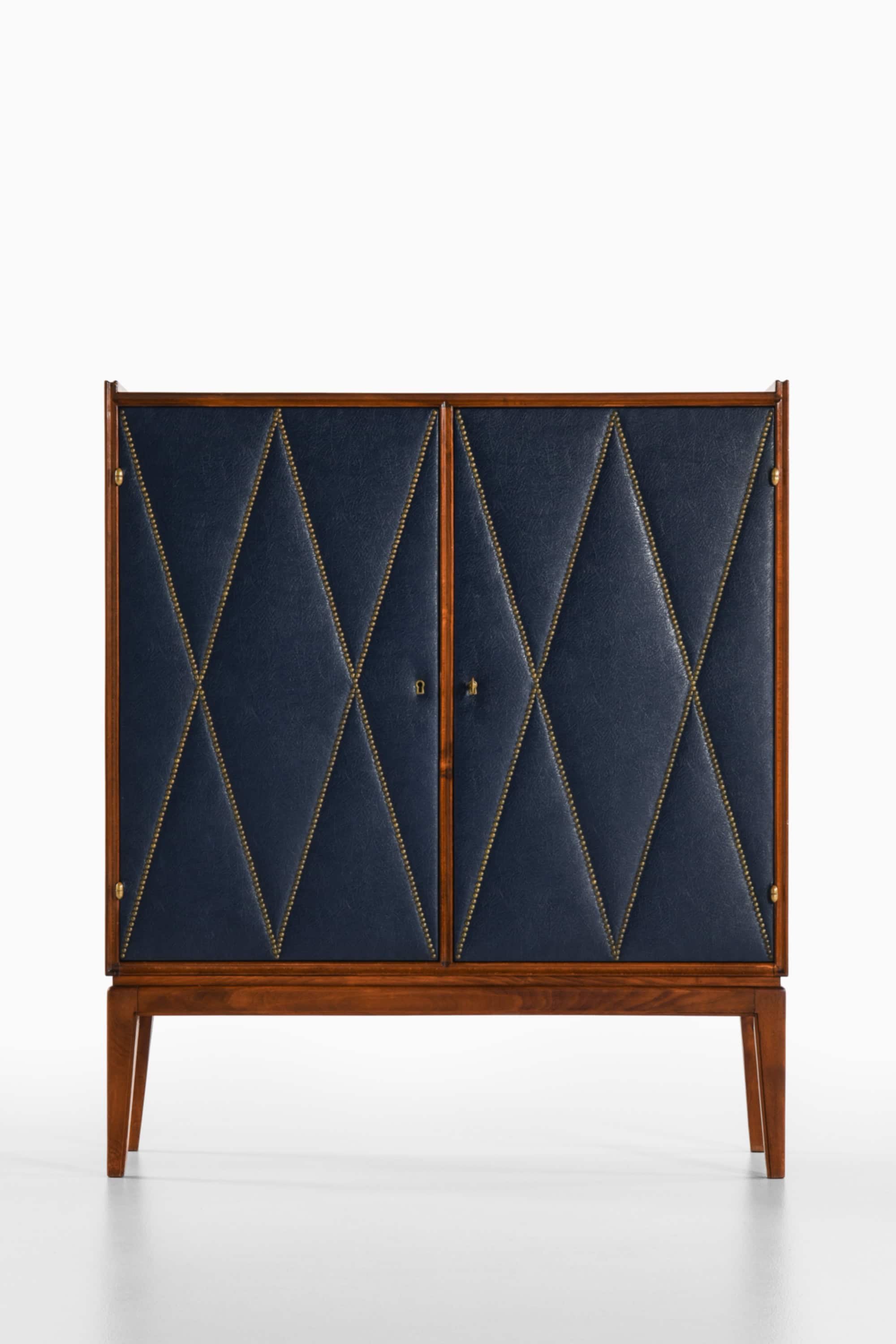
Otto Schulz attrib. cabinet
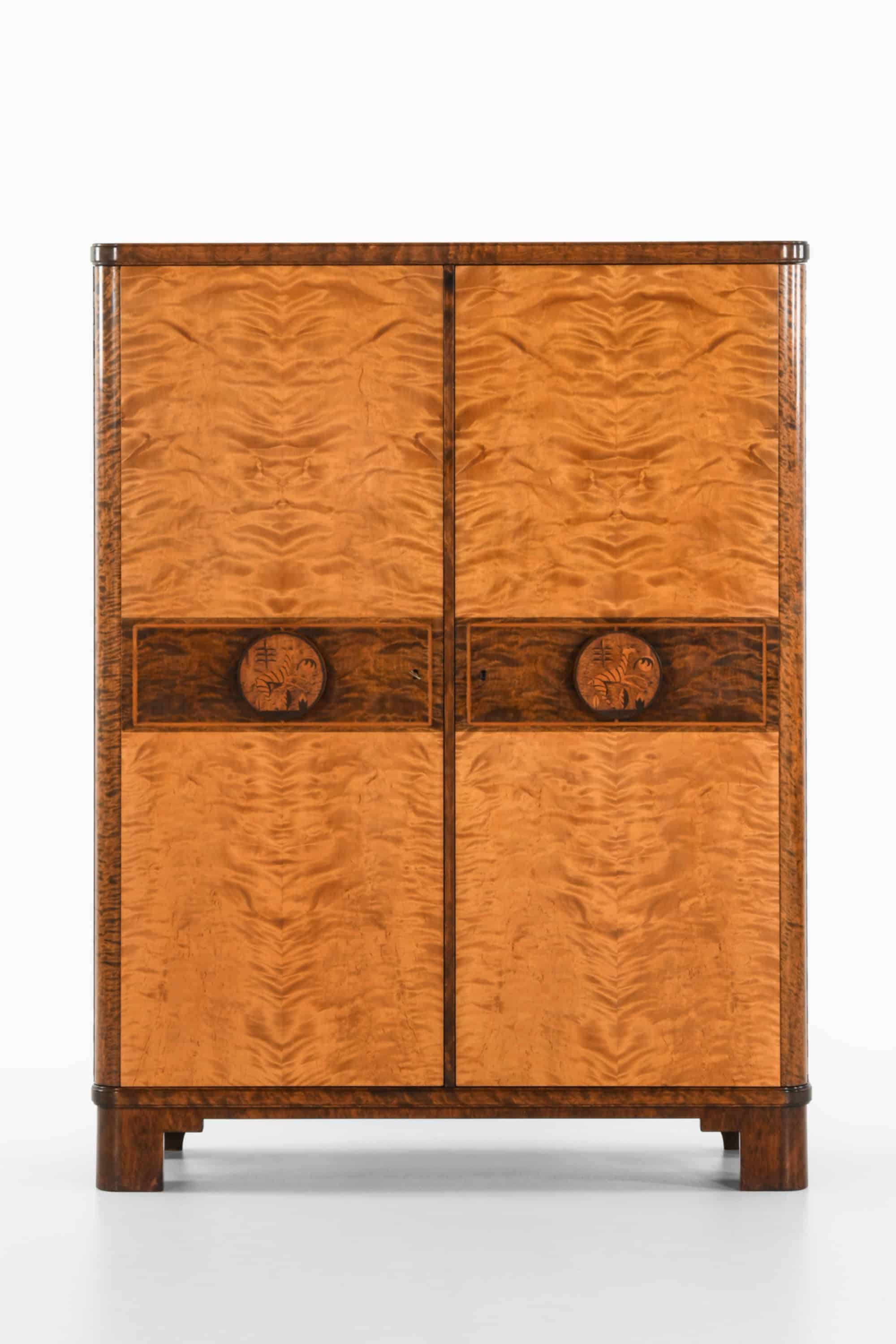
Otto Schulz cabinet
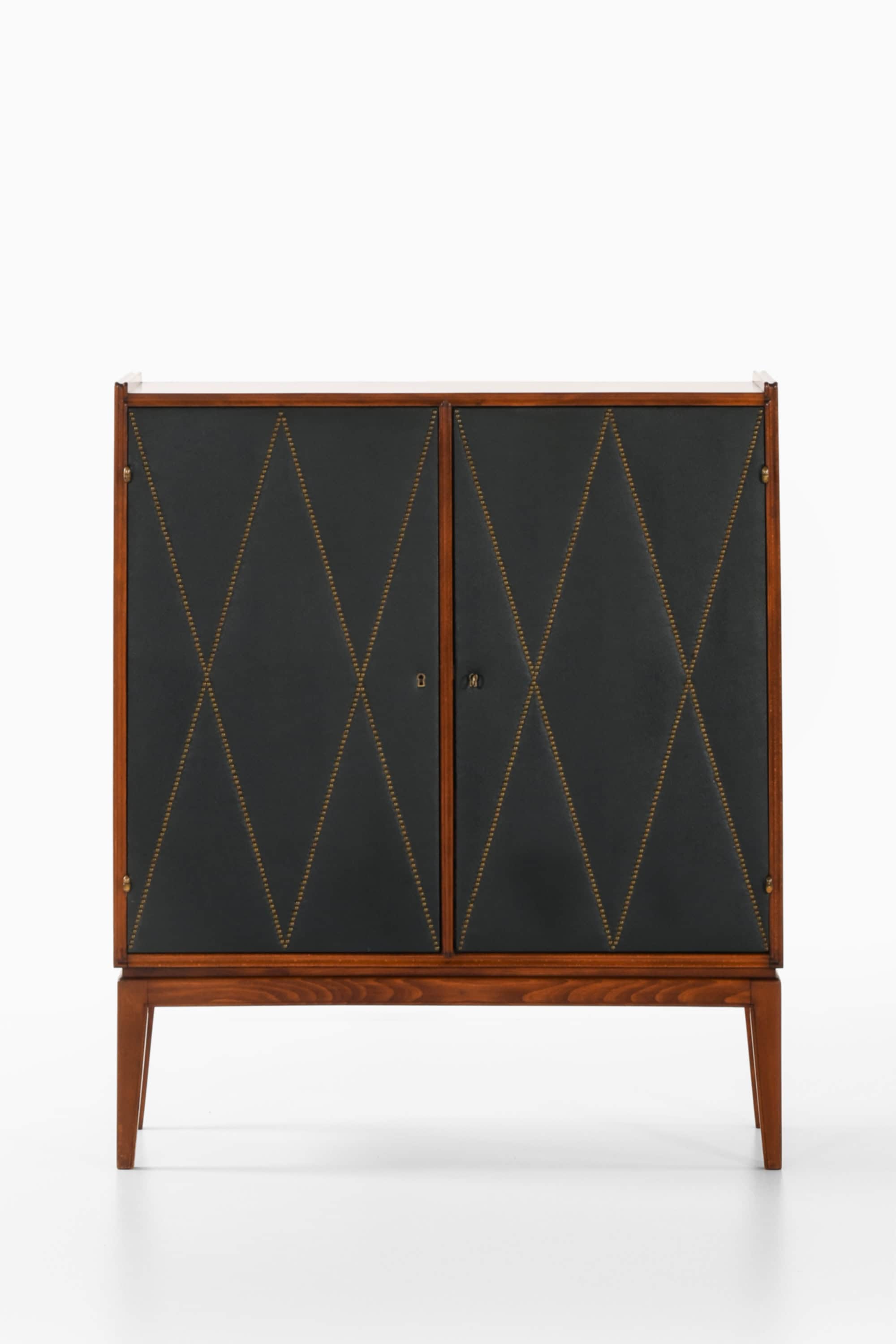
Otto Schulz attrib. cabinet

Otto Schulz easy chair

Otto Schulz easy chairs

Otto Schulz easy chairs

Otto Schulz easy chair

Otto Schulz cabinet

Otto Schulz easy chair
